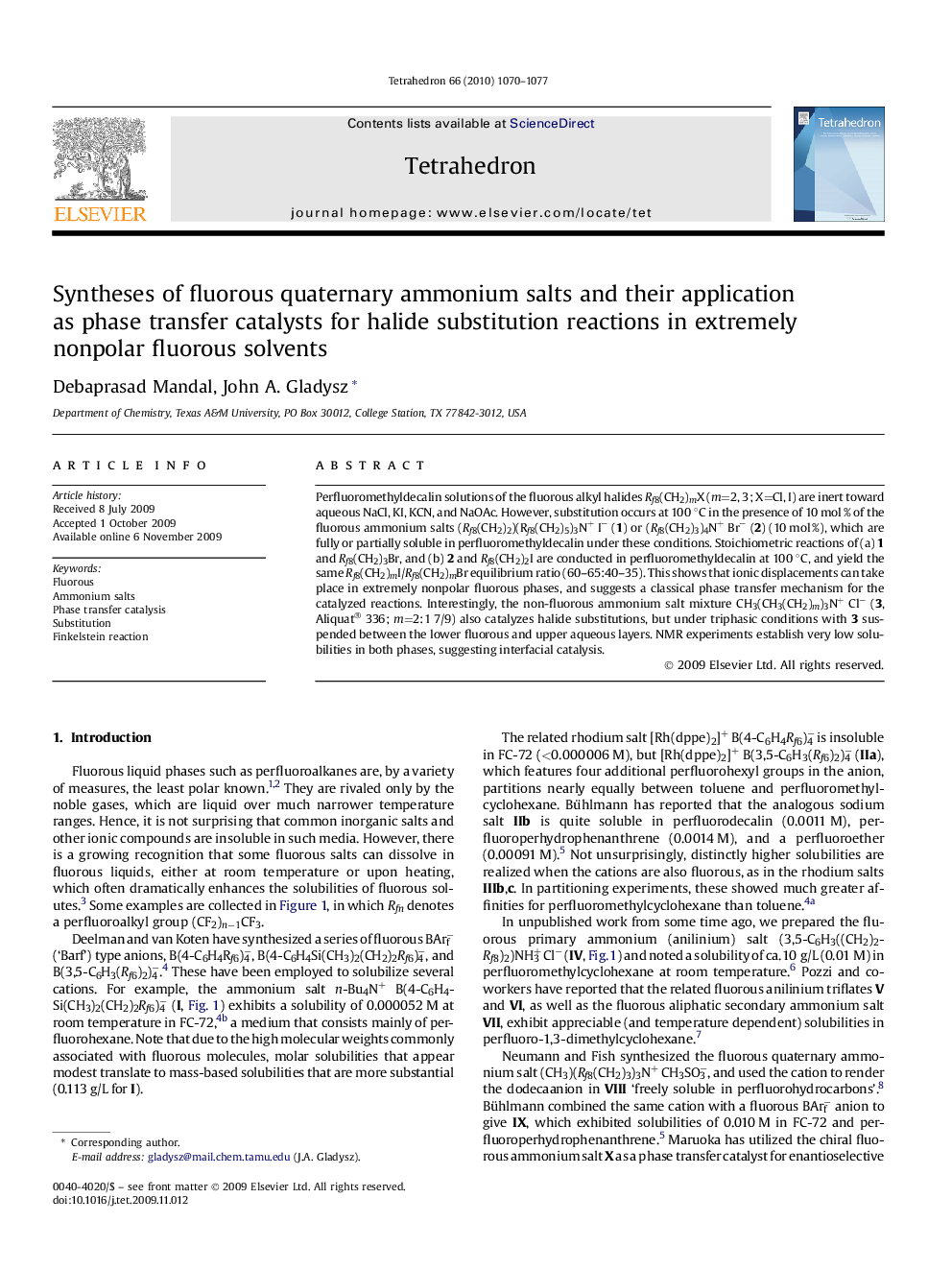| Article ID | Journal | Published Year | Pages | File Type |
|---|---|---|---|---|
| 5223874 | Tetrahedron | 2010 | 8 Pages |
Perfluoromethyldecalin solutions of the fluorous alkyl halides Rf8(CH2)mX (m=2, 3; X=Cl, I) are inert toward aqueous NaCl, KI, KCN, and NaOAc. However, substitution occurs at 100 °C in the presence of 10 mol % of the fluorous ammonium salts (Rf8(CH2)2)(Rf8(CH2)5)3N+ Iâ (1) or (Rf8(CH2)3)4N+ Brâ (2) (10 mol %), which are fully or partially soluble in perfluoromethyldecalin under these conditions. Stoichiometric reactions of (a) 1 and Rf8(CH2)3Br, and (b) 2 and Rf8(CH2)2I are conducted in perfluoromethyldecalin at 100 °C, and yield the same Rf8(CH2)mI/Rf8(CH2)mBr equilibrium ratio (60-65:40-35). This shows that ionic displacements can take place in extremely nonpolar fluorous phases, and suggests a classical phase transfer mechanism for the catalyzed reactions. Interestingly, the non-fluorous ammonium salt mixture CH3(CH3(CH2)m)3N+ Clâ (3, Aliquat® 336; m=2:1 7/9) also catalyzes halide substitutions, but under triphasic conditions with 3 suspended between the lower fluorous and upper aqueous layers. NMR experiments establish very low solubilities in both phases, suggesting interfacial catalysis.
Graphical abstractFluorous solutions of alkyl halides Rf8(CH2)mX (m=2, 3) are inert toward aqueous NaCl, KI, KCN, and NaOAc, but substitution occurs in the presence of fluorous (biphasic conditions) or non-fluorous (triphasic conditions) quaternary ammonium salts. Download full-size image
